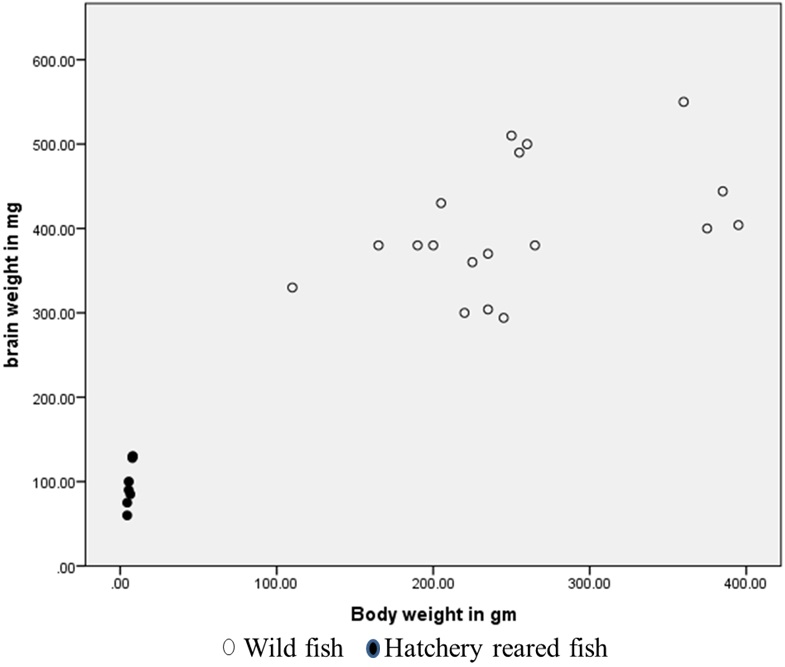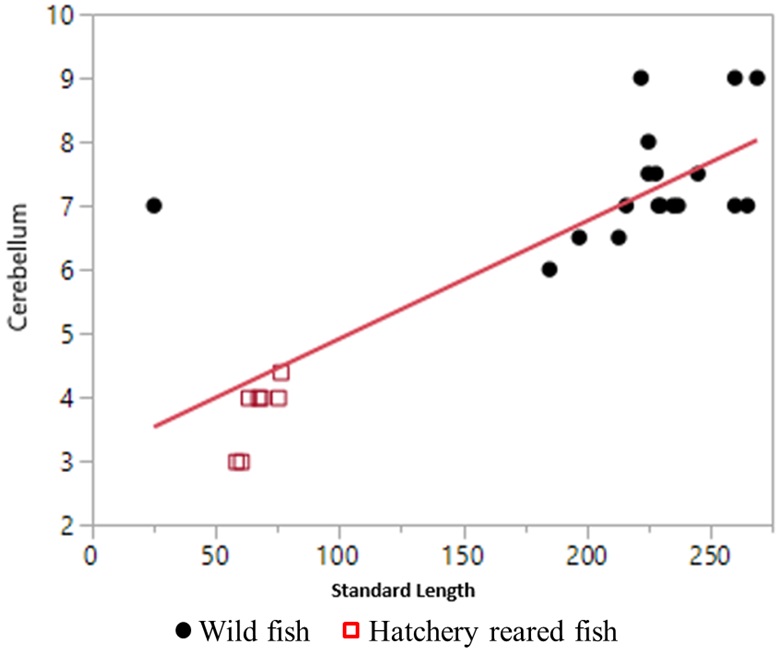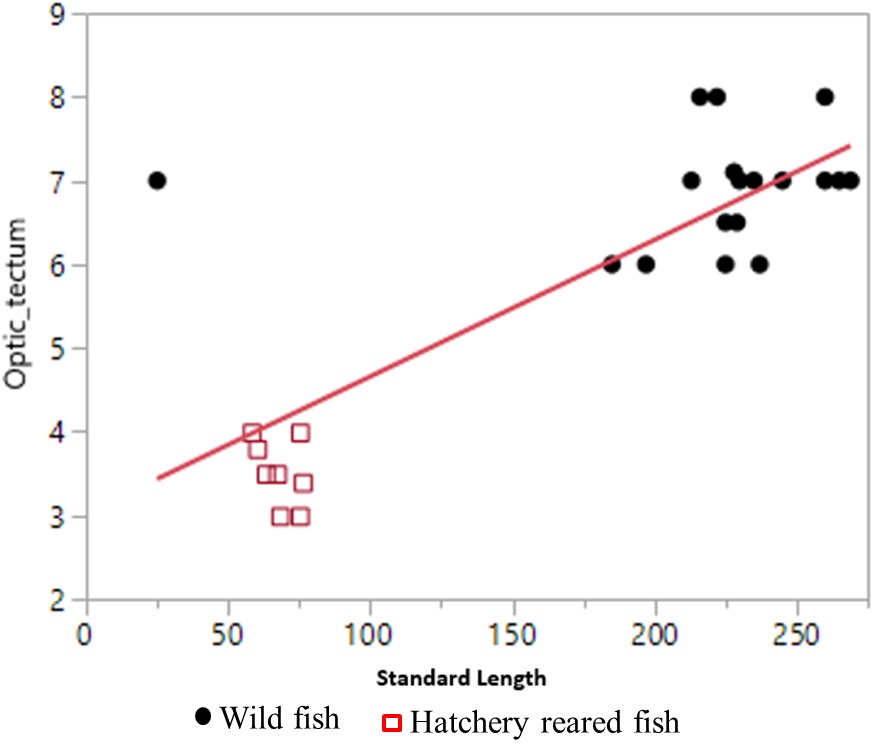Abstract
The present study was aimed at comparing the brain size of mahseer (Tor putitora) in relation to their body weight and standard length, to investigate the potential impact of rearing environment on brain development in fish. The weight of the brain and three of its subdivisions cerebellum (CB), optic tectum (OT), and telencephalon (TC) were measured for both wild and hatchery-reared fish. The data was analysed using multiple analysis of covariance (MANCOVA), analysis of covariance (ANCOVA), and discriminate function analysis (DFA). We found the fish reared under hatchery conditions exhibit smaller brain size related to body weight, when compared to the wild ones. A significant (p<0.5) difference was observed in the length of CB and OT concerning the standard body length while no significant difference was found in TC of the fish from both the origins. The results of the current study highlight a logical assumption that neural deficiency affects the behaviour of fish, that’s why the captive-reared fish show maladaptive response and face fitness decline when released to the natural environment for wild stock enhancement. The current study concluded that hatchery-reared fish exhibit variations in gross brain morphology as compared to their wild counterpart.
Keywords:
morphometry; fish research station Thana; Malakand agency; Swat

 Thumbnail
Thumbnail
 Thumbnail
Thumbnail
 Thumbnail
Thumbnail
 Thumbnail
Thumbnail



